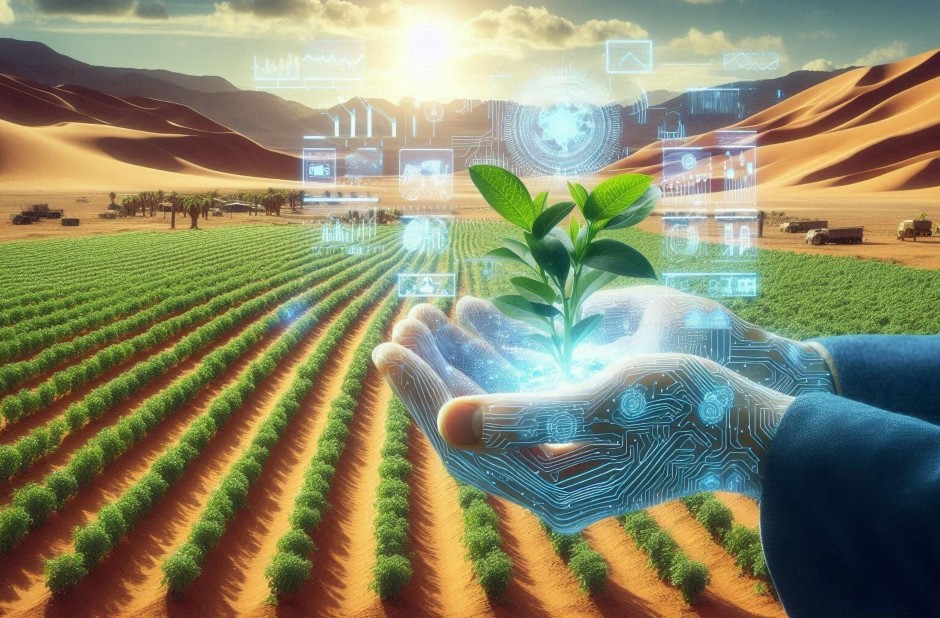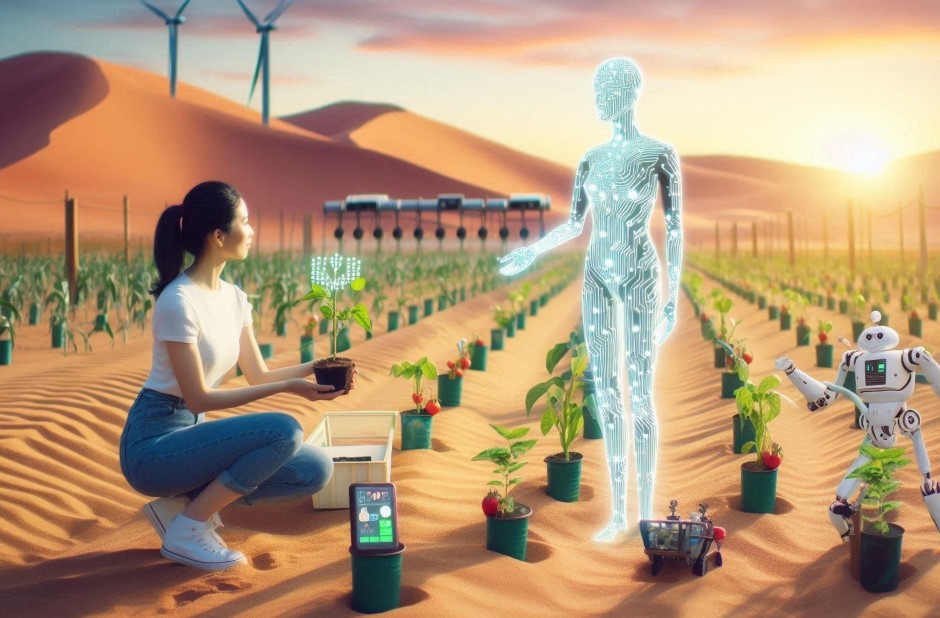In recent years, there has been a significant advancement in the field of Artificial Intelligence (AI) and Augmented Reality (AR). These technologies have become increasingly popular and have the potential to enhance virtual experiences in various fields such as gaming, education, healthcare, and...
AI Helps Farmers Grow Crops in the Desert

The transformation of barren desert landscapes into productive agricultural zones represents one of the most remarkable achievements of modern technology. Artificial intelligence is at the forefront of this revolution, enabling farmers to cultivate crops in some of the world's most challenging environments. As climate change continues to impact traditional farming regions and global food security becomes increasingly critical, AI-powered desert agriculture offers hope for sustainable food production in previously unusable lands.
Smart Irrigation Systems Maximize Water Efficiency
Water scarcity poses the greatest challenge in desert farming, making efficient irrigation systems essential for success. AI-driven smart irrigation networks use advanced sensors and machine learning algorithms to monitor soil moisture levels, weather patterns, and plant water requirements in real-time.
Precision Water Management
These intelligent systems deliver water exactly when and where plants need it most, reducing waste by up to 40% compared to traditional irrigation methods. The technology analyzes multiple data points:
- Soil moisture content at various depths
- Local weather forecasts and humidity levels
- Plant growth stages and specific water requirements
- Evapotranspiration rates throughout the day
Crop Monitoring and Health Assessment
AI-powered imaging systems continuously monitor crop health across vast desert farms, identifying potential problems before they become critical. Satellite imagery, drones, and ground-based sensors work together to create comprehensive plant health assessments.
Early Disease Detection
Machine learning algorithms can detect signs of plant stress, nutrient deficiencies, and disease outbreaks days or even weeks before they become visible to the human eye. This early warning system allows farmers to take preventive action, saving both crops and resources.
Optimal Harvest Timing
AI systems analyze crop maturity levels across different field sections, providing precise recommendations for harvest timing. This ensures maximum yield quality and reduces post-harvest losses that are particularly costly in remote desert locations.

Climate Control and Microenvironment Management
Creating favorable growing conditions in desert environments requires sophisticated climate control systems. AI manages these complex environments by coordinating multiple variables simultaneously.
Greenhouse Automation
In controlled environment agriculture facilities, AI systems regulate:
- Temperature and humidity levels throughout the day
- Light intensity and spectrum optimization
- CO2 concentration for enhanced photosynthesis
- Air circulation patterns for optimal plant growth
Soil Enhancement and Nutrient Management
Desert soils often lack essential nutrients and organic matter necessary for plant growth. AI helps farmers develop targeted soil improvement strategies based on detailed chemical and biological analysis.
Precision Fertilization
Machine learning algorithms create customized fertilization schedules that account for specific crop needs, soil conditions, and environmental factors. This targeted approach reduces fertilizer costs while maximizing plant nutrition and minimizing environmental impact.
Success Stories and Future Prospects
Several pioneering projects demonstrate the potential of AI-assisted desert farming. In the Middle East, technology companies have successfully grown fresh produce in controlled desert environments, achieving yields comparable to traditional agricultural regions while using 90% less water.
As AI technology continues to advance, desert farming capabilities will expand further. Future developments include enhanced predictive analytics for weather patterns, improved crop varieties designed specifically for arid conditions, and fully autonomous farming systems that require minimal human intervention.
The integration of artificial intelligence with desert agriculture represents a crucial step toward global food security. By making previously unusable land productive, this technology offers sustainable solutions for feeding growing populations while adapting to climate change challenges. As these systems become more sophisticated and cost-effective, desert farming may become a cornerstone of future agricultural strategies worldwide.



